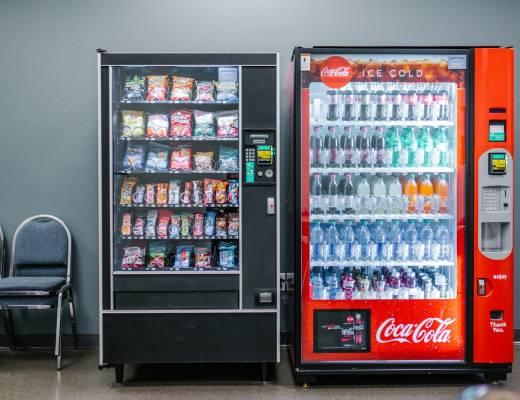Building trust isn’t just about looking secure anymore. That’s the bare minimum. These days, if you’re aiming to build a tech-forward brand, whether you’re a startup founder, an ecommerce builder, or someone quietly launching a SaaS tool from your laptop, you’re really asking:
how do I get people to believe in this thing before they fully understand it?
That’s a tricky space to play in. Technology often outpaces intuition. So trust has to do some heavy lifting.
Let’s talk through what makes a brand feel tech-forward
and trustworthy. Because one without the other rarely works for long.
People trust what feels real, not just polished
Let’s start with the obvious: good design matters. A clean site, easy-to-navigate UX, and clear CTAs all contribute to building a first impression.
But here’s where it gets a little weird. If something feels
too polished (like everything’s perfect, no typos, no personality), it can actually backfire. People start wondering who’s behind the curtain.
Instead of chasing perfection, aim for consistency. A slightly awkward About page that’s clearly written by a real person? That’ll probably do more for your brand than a sleek homepage full of generic tech speak.
Quick thought: ever notice how many major brands have started using lowercase in their logos? It’s not an accident. They’re trying to look less intimidating. More like a person you’d text than a platform you have to “learn.”
Security is invisible; until it isn’t
No one will thank you for using great
security practices. But they’ll absolutely roast you the second it fails.
Even if your brand is small (or still in early access), you have to treat security as core to your identity, not a technical layer. And honestly, part of that means helping people
understand what you’re doing to keep them safe.
That might mean using clear password protocols (and explaining them). One useful reference here is the
NIST password guidelines, which break down what modern, user-friendly password security actually looks like. This approach is less frustrating for users and more secure overall. Win-win, right?
Also, don’t bury your security practices 5 clicks deep in a Help Center no one reads. A simple “Security” tab in your footer goes a long way.
Trust is social, not just technical
Here’s the catch with trust: people often don’t build it through logic. They build it through stories.
That could mean case studies. Reviews. A half-decent presence on Reddit or Hacker News. Or even just being visible where your users are and sounding like a human when you get there.
More importantly, being part of a community (not just advertising to one) matters more than ever. Events like the
Hawkfest brand gathering aren’t just about “networking.” They’re about showing up in the same space your audience values, listening before you pitch, and maybe even admitting you don’t have all the answers.
That last part? Kind of huge. Brands that feel trustworthy often have a bit of humility baked in.
Don’t fake transparency, practice it
Everyone says they’re transparent. Few actually are.
It’s not about dumping internal documents online. It’s more about… explaining your decisions. A brief note on why you’re sunsetting a feature. A roadmap with loose dates. A public changelog, even if only ten people read it.
Transparency also means owning mistakes. Not in a “sorry if you were offended” way, but in the actual “yep, we messed that up, here’s what we’re changing” way.
In fact, a
Harvard Business Review study found that people are more likely to trust leaders who acknowledge failure and show empathy, even over those who project confidence without cracks. So, if you’re building in public, the occasional “oops” might be doing more for your credibility than you’d think.
Build with your audience, not just for them
One trap tech brands fall into? Building the “perfect” product in private, then unveiling it to silence.
Getting real feedback early (like embarrassingly early) can do more for your brand than months of market research. Not because users will magically design the perfect tool for you, but because
they’ll start to care.
Psychologists call this the
IKEA effect: people value what they help build. Even a tiny amount of effort (responding to a survey, joining a beta, offering a feature suggestion) creates emotional investment. According to Behavioral Scientist, this effect runs deep enough to
influence everything from pricing tolerance to brand loyalty.
And honestly, people just want to be heard. If your brand can make that feel genuine (not performative) you’ll earn trust faster than any ad campaign could.
The tech part can’t distract from the human part
Yes, use AI. Automate things. Scale where you can. But don’t let all that distance you from your audience.
Somewhere in the process, you’ll need to
build systems that are smart and human-aware. That means writing copy that doesn’t sound like it was generated in a lab. Using tools without hiding behind them. And still making space for human support when it matters.
According to a Pew Research Center report, a majority of Americans feel uneasy about AI and automated systems in general, especially when it’s unclear who’s in charge or what’s being done with their data.
So, every time you automate a support message or use an AI tool to pre-fill something, just ask yourself: would I feel weird getting this?
If the answer is “yeah, maybe a little,” it’s worth revisiting.
Trust is slow. Tech moves fast.
Maybe this is the tension at the heart of it all. Tech-forward brands tend to race ahead, solving problems before users even feel them. But trust lags behind. It needs time, consistency, and some awkward honesty along the way.
And while there’s no universal checklist to follow, a few questions help:
- Do users understand what you’re doing with their data?
- Can they reach you (actually reach you) when something breaks?
- Are you building something they can feel part of?
Because a brand isn’t just the thing you make. It’s how people
feel about the way you make it.
And that part? You can’t really fake.
Photo by Kevin Bhagat; Unsplash






